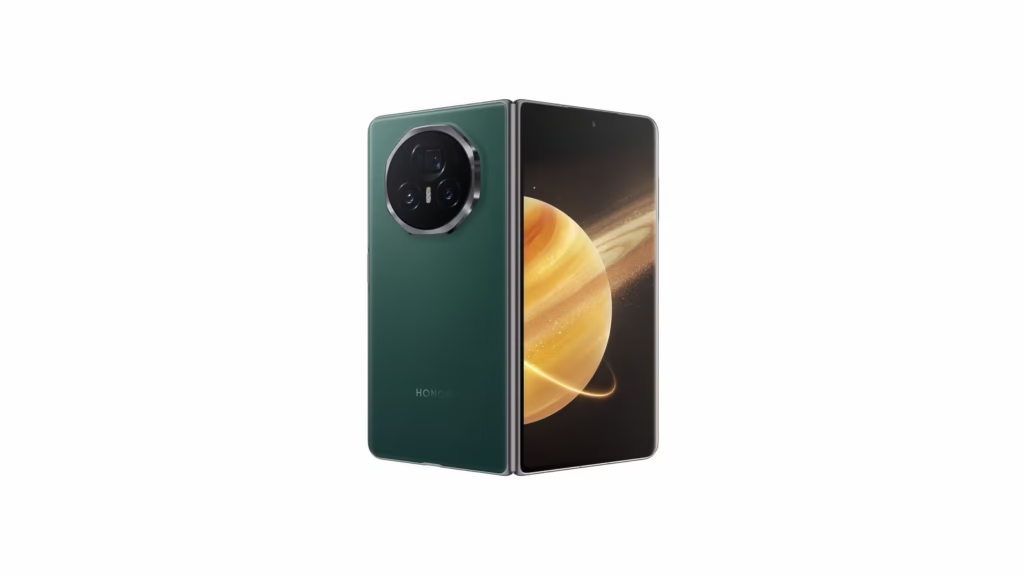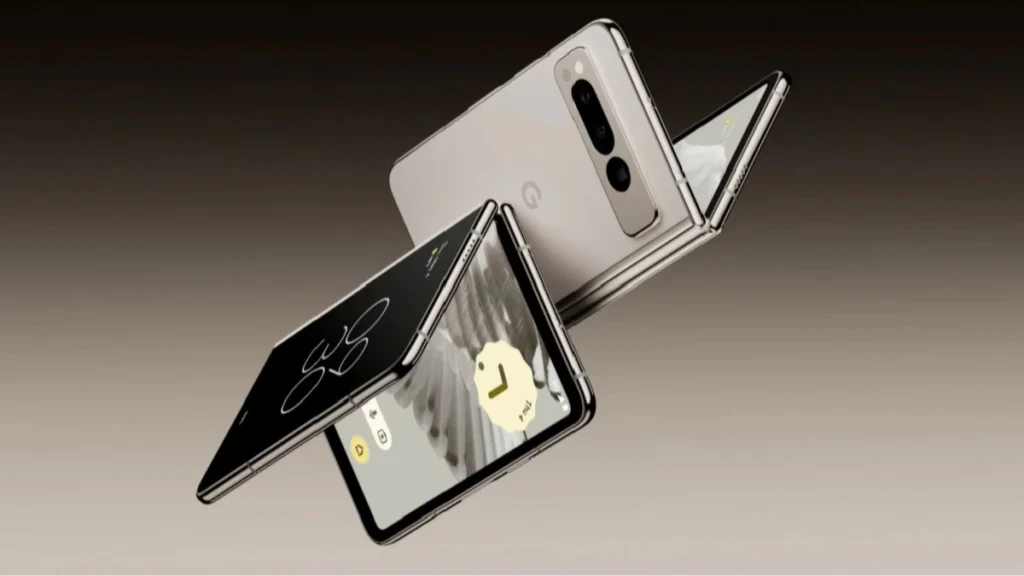A New Era of Smart Foldables
Foldables with Advanced AI Features by reviewtechs In 2025, the smartphone landscape is experiencing a dramatic shift. Foldable smartphones—once considered a niche novelty—are now becoming mainstream. But the latest generation doesn’t just fold; it thinks, assists, and adapts, thanks to advanced AI integration. From Samsung’s Galaxy Z Fold7 and Flip7 to Google’s Pixel Fold 2 and Honor Magic V3, today’s foldables come packed with on-device AI, contextual intelligence, and user-personalized features that go far beyond multitasking or camera upgrades.
This article explores how foldables have evolved, how AI is transforming user interaction, and what the fusion of flexible design and machine intelligence means for the future of mobile technology.
The Evolution of Foldables: From Form to Function
Early Foldables: Novelty Over Utility
When foldables first launched, they drew attention due to their flexible screens, book-style designs, and futuristic look. However, these devices often struggled with:
- Durability issues (screen creasing, hinge failures)
- Battery inefficiency
- High price tags with limited benefits
2023–2025: Foldables Mature
The latest generation—like Samsung Galaxy Z Fold7, Flip7, Honor Magic V3, and Pixel Fold 2—represents a turning point:


- Ultra-durable UTG (Ultra Thin Glass)
- Water-resistant, dustproof designs
- Slimmer hinges with fewer moving parts
- Improved app continuity between folded and unfolded states
But the real leap comes from their AI capabilities.
AI Integration in Foldables: What’s New in 2025
1. AI-Powered Multitasking
Modern foldables now come with context-aware task suggestion. For example:
- Typing an email on one screen while summarizing a PDF with AI on the other
- Automatic window arrangement based on app usage history
- AI predicts the next app and pre-loads it to reduce load times
2. Generative AI for Creativity and Productivity
Foldables like the Galaxy Z Fold7 now offer:
- AI Sketch-to-Image Tools: Draw a rough sketch, and AI renders a full-resolution image
- AI Notes Summarizer: Automatically compiles meeting notes or voice memos into summaries
- Smart Canvas: AI helps create presentations, storyboards, or outlines using spoken commands
3. Real-Time Language Translation
With on-device AI, real-time voice and text translation is seamless:
- Samsung and Honor foldables support live call translation
- Google’s Pixel Fold 2 integrates a bilingual chat mode with contextual grammar correction
4. AI-Powered Photography and Editing
Foldables with advanced camera systems now use AI to:
- Suggest the best angle/frame in Flex Mode
- Remove photobombers automatically
- Adjust lighting dynamically based on detected skin tone and background
Comparison Chart: Top AI Foldables in 2025
| Feature | Galaxy Z Fold7 | Pixel Fold 2 | Honor Magic V3 |
|---|---|---|---|
| AI Multitasking | ✅ Yes | ✅ Yes | ⚠️ Limited |
| Live Translation | ✅ On-device | ✅ Cloud + Local | ✅ Basic |
| AI Camera Assistance | ✅ Pro-grade | ✅ Google Tensor AI | ⚠️ Software-limited |
| Creative Tools (AI Drawing) | ✅ Built-in | ✅ Gemini Sketch | ❌ Not included |
| Battery Life | 🔋 5,000mAh | 🔋 4,800mAh | 🔋 5,100mAh |
| Flex Mode Apps | ✅ Optimized | ⚠️ Not Universal | ✅ Yes |
| Price (USD) | $1,899 | $1,699 | $1,499 |
Impact on User Experience
Foldables with AI are not just faster—they’re smarter. Here’s how they change the experience:
- Adaptive Learning: The phone learns your schedule and adjusts notifications accordingly.
- Battery Optimization: AI reduces background activity, increasing longevity.
- Health & Wellness: AI tracks posture during fold use, eye strain, and even offers movement reminders.
Challenges Ahead
Despite rapid progress, some challenges remain:
- High Cost: Most advanced foldables remain expensive
- Limited Developer Optimization: Not all apps support dual-screen or AI features yet
- Privacy Concerns: On-device AI minimizes data sharing, but concerns still exist about data security
Conclusion: The Future Is Foldable—and Smart
Foldables in 2025 are no longer a luxury gimmick. They are becoming the core innovation hub of mobile technology—blending versatile hardware with intelligent software. Whether it’s drawing with AI on a split screen, getting real-time translation in a call, or letting your phone summarize your day, these devices redefine productivity and creativity.
And as on-device AI continues to evolve, foldables could become the ultimate personal assistant—tailored to your habits, language, and lifestyle.
Should You Buy a Foldable with AI in 2025?
If you’re someone who values innovation, multitasking, and enhanced productivity, AI foldables are absolutely worth considering. While still premium in price, they offer significant advantages:
- Seamless multi-app workflows
- Personalized experiences that learn from your usage
- Future-proofed design that combines form and function
However, if your needs are basic—calls, browsing, light media—you may not fully utilize the AI capabilities. For those users, traditional flagships or midrange phones may be more practical.
For creatives, professionals, travelers, and tech enthusiasts, foldables with AI are no longer a luxury—they’re a game-changer.
AI Hardware and Software Synergy
The success of AI in foldables isn’t just software—it’s deeply tied to hardware innovation. In 2025, flagship foldables are equipped with next-gen chipsets like the Qualcomm Snapdragon X Elite, Google Tensor G3, and MediaTek Dimensity 9400—all built for AI workloads at the edge.
These chips allow:
- On-device machine learning (ML) processing for tasks like live transcription, image enhancement, and NLP.
- Neural Processing Units (NPUs) that reduce latency by processing AI tasks locally, improving speed and privacy.
- Real-time voice assistants that respond contextually and work offline.
Foldables also integrate high-refresh OLED displays, multiple microphones for accurate voice commands, and advanced sensors that enable environment-aware interactions (e.g., changing app behavior based on lighting, posture, or screen angle).
Together, this tight coupling of AI software and hardware results in smoother, more intelligent experiences unmatched by traditional flat phones.
Foldables in 2025 have entered a transformative phase—not just in how they look, but in how they think. Thanks to advanced AI integration, these smart devices are moving from passive tools to active digital partners that understand your workflow, adapt to your behavior, and help you get more done with less effort.
No longer confined to the realm of early adopters, foldables with AI are now practical, powerful, and incredibly versatile. Whether you’re sketching ideas on a fold-out screen, live-translating a call in real-time, or summarizing documents on the fly, the synergy between flexible hardware and intelligent software is redefining what a phone can be.
Of course, they’re not perfect—price, app optimization, and long-term durability still warrant consideration. But the gap between conventional smartphones and foldables is narrowing fast. And with AI as the driver, it won’t be long before flat phones feel like a thing of the past.
If you’re eyeing the future of mobile tech, foldables with advanced AI features aren’t just a trend—they’re a preview of what’s next. The smart revolution has begun, and it’s folding its way right into your pocket.
Check Also : What is Generative AI and How It Works: Explained with Pros, Cons by Reviewtechs
FAQs: Foldables with Advanced AI
Q1. Are foldables with AI better than regular phones?
Yes, especially for multitasking, creative workflows, and AI-enhanced features.
Q2. Can foldable phones replace laptops?
Not fully, but they are bridging the gap with multi-window support and AI productivity tools.
Q3. Is the AI processing done locally or on the cloud?
Mostly local, thanks to powerful chipsets like Snapdragon X Elite and Google Tensor G3.
Q4. Are foldables more prone to breaking?
Modern foldables (2025 models) are highly durable, waterproof, and crease-resistant.
Q5. What’s the best AI feature in foldables?
Smart multitasking and real-time translation are the most impactful today.
Q6. Do all apps support foldable screens and AI?
No. Major apps are optimized, but some third-party apps may lag behind.
Q7. Are these phones suitable for gamers?
Yes—many offer flagship performance, cooling systems, and immersive displays.
Q8. Can foldables work with styluses?
Yes, devices like the Z Fold7 support S-Pen with AI-enhanced drawing and note-taking.
Q9. Is the battery life worse in foldables?
Battery life has improved significantly, but multitasking and AI use can reduce it faster.
Q10. Will foldables get cheaper soon?
As the tech matures and production scales, prices are expected to drop by 2026.

